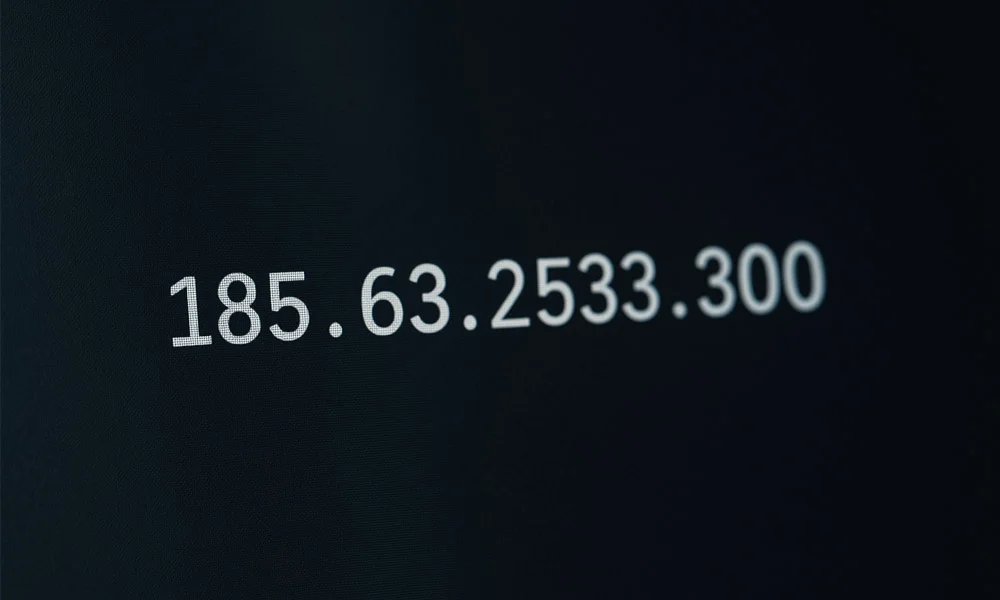
In today’s increasingly digital world, every action on the internet—whether it’s accessing a website, sending an email, or streaming content—relies on a complex backbone of protocols, networks, and, most importantly, IP addresses. One such address that has attracted curiosity is 185.63.253.300. At first glance, it appears to be a standard IPv4 address. However, upon closer inspection, it presents a few irregularities that merit discussion from both a technical and cybersecurity perspective.
Understanding IP Addresses: The Basics
An IP address (Internet Protocol address) is a unique identifier assigned to devices participating in a network that uses the Internet Protocol for communication. In IPv4, an IP address is a 32-bit number, typically represented in dotted-decimal format—e.g., 192.168.0.1.
Each segment, known as an “octet,” can range from 0 to 255. This is because each octet is made up of 8 bits, and the maximum value an 8-bit binary number can hold is 255.
With that in mind, a valid IPv4 address will follow the format A.B.C.D, where:
-
A, B, C, and D are integers from 0 to 255.
So what happens when we look at 185.63.253.300?
Is 185.63.253.300 a Valid IP Address?
The simple answer is: No, 185.63.253.300 is not a valid IPv4 address.
The last octet, 300, exceeds the maximum limit of 255. Therefore, from a networking standpoint, this address cannot be assigned to any device on the internet or a private network. This leads to several possibilities and interpretations:
-
Typographical Error: It could simply be a typo, where someone meant to type
185.63.253.30or185.63.253.100, both of which are valid addresses. -
Obfuscation: In some cybersecurity contexts, invalid IPs are used to mislead, distract, or mask actual addresses. They might appear in spam emails, malicious scripts, or suspicious software logs.
-
Symbolic Placeholder: Just as
123.456.789.000might be used in documentation or examples,185.63.253.300could be a fabricated example meant for educational, placeholder, or testing purposes—though ideally, such examples would not use values above 255.
The Psychological and Practical Use of Invalid IPs
Although technically invalid, addresses like 185.63.253.300 can still appear in a number of practical or even deceptive scenarios:
1. Fake Logging Attempts
Cybersecurity teams sometimes encounter invalid IP addresses in log files—especially in intrusion detection systems or honeypots. These invalid addresses may be generated by bots or attackers attempting to:
-
Evade IP blocking
-
Overwhelm logging systems
-
Test server configurations
-
Probe for firewall weaknesses
2. Email and Spam Headers
Spammers might insert such invalid addresses into email headers to obscure the true origin of the message. Since most anti-spam engines parse headers for IP addresses, inserting an invalid one might allow the spam to slip through by confusing parsers.
3. Social Engineering and Scams
In tech support scams, scammers sometimes show users fake command outputs, including invalid IP addresses like 185.63.253.300, to create an illusion of infection or attack. The intent is to scare users into purchasing unnecessary services or software.
The Anatomy of the Range: 185.63.253.X
While 185.63.253.300 itself is invalid, the 185.63.253.0/24 subnet is entirely valid. Let’s explore what this implies.
The IP block 185.63.253.0/24 includes addresses from:
-
185.63.253.0to185.63.253.255
This gives us 256 IP addresses, typically assigned by a regional internet registry such as RIPE NCC in Europe. These addresses can be used for hosting websites, running VPNs, managing servers, or allocating to residential ISPs.
Thus, it’s very possible that 185.63.253.300 was either:
-
Mistyped version of a legitimate IP in this range
-
Deliberately crafted to resemble it while being non-functional
Importance of Validating IP Input
The emergence of invalid IPs such as 185.63.253.300 highlights the importance of input validation in all aspects of network and software development. Systems that fail to validate input risk:
-
Logging misleading or useless data
-
Introducing bugs or errors into applications
-
Creating openings for injection attacks
-
Disrupting monitoring and alerting mechanisms
For example, if a web application attempts to geo-locate a visitor based on an IP and receives 185.63.253.300, it might throw an error or default to “Unknown,” degrading the user experience.
Tools to Detect and Block Invalid IPs
Network administrators and developers have several tools at their disposal to guard against invalid or malformed IP addresses:
-
Regular Expressions (Regex): To match only values between 0–255 per octet.
-
Firewall Rules: To ignore or reject malformed inputs at the perimeter.
-
Logging Filters: To ensure that logs only contain structured and valid IPs.
-
Application-Level Validation: Especially important in APIs, forms, and server configs.
By applying these measures, organizations can safeguard their systems from misleading data or manipulative inputs.
IPv6 and the Future of Addressing
As IPv4 addresses continue to be exhausted, IPv6 adoption becomes increasingly important. IPv6 addresses look very different from IPv4 and use hexadecimal representation, such as:
2001:0db8:85a3:0000:0000:8a2e:0370:7334
IPv6 drastically increases the number of available IP addresses, but it also requires more complex validation techniques. However, malformed IPv4 addresses like 185.63.253.300 still have no place in the IPv6 world.
Conclusion: The Mystery of 185.63.253.300
While on the surface 185.63.253.300 seems like a harmless number, its invalid nature makes it more than just a technical curiosity. It raises important questions about the reliability of data, the potential for obfuscation in cybersecurity, and the necessity of input validation in the digital age.
Whether this IP appears as a simple mistake, a smokescreen for cyber deception, or as part of a larger scheme, one thing is certain: understanding the limits and proper structure of IP addresses is essential for anyone involved in networking, software development, or IT security.





